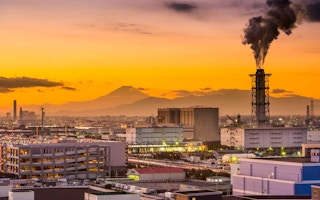Japan’s greenhouse gas emissions fell 3.1 percent to a three-year low in the fiscal year ended March 2015, due to reduced power demand and growing use of renewables, revised government figures showed on Friday.
Emissions fell for the first time in five years to 1.364 billion metric tonnes of CO2 equivalent from 1.408 billion tonnes the year before, which was the second-highest on record, according to the revised data from the Ministry of Environment. That was down 2.4 percent from 2005 and up 7.3 percent from 1990.
That also compares with record emissions of 1.413 billion metric tonnes in 2007, the data showed.
This marks the first decline since emissions rose after the 2011 Fukushima disaster that led to the closure of nuclear power plants and an increased reliance on coal and gas.
The reduction followed power saving, hundreds of billions of dollars worth of investments in renewable energy, and fuel conversion and enhanced fuel efficiency of fossil fuel-fired power units, the ministry said.
The world’s fifth-biggest carbon emitter officially set a goal in July to cut its emissions by 26 per cent by 2030 from 2013 levels.
Only two of Japan’s 43 commercial nuclear reactors have been generating power, illustrating the slow restart process since all reactors were eventually idled in the wake of the meltdown at Tokyo Electric Power’s Fukushima Daiichi nuclear plant in March 2011.
A gradual restart of reactors and growing renewable power would likely reduce the nation’s energy-originated CO2 emissions for a third straight year to 1.131 billion tonnes in fiscal 2016 from a record 1.235 billion tonnes in 2013, the Institute of Energy Economics Japan (IEEJ) projected in December.
Anxious to cut fuel bills, Prime Minister Shinzo Abe wants atomic power to account for 20-22 per cent of Japan’s energy mix by 2030, but the goal is widely seen as unrealistic, and opposition to nuclear power remains widespread.










